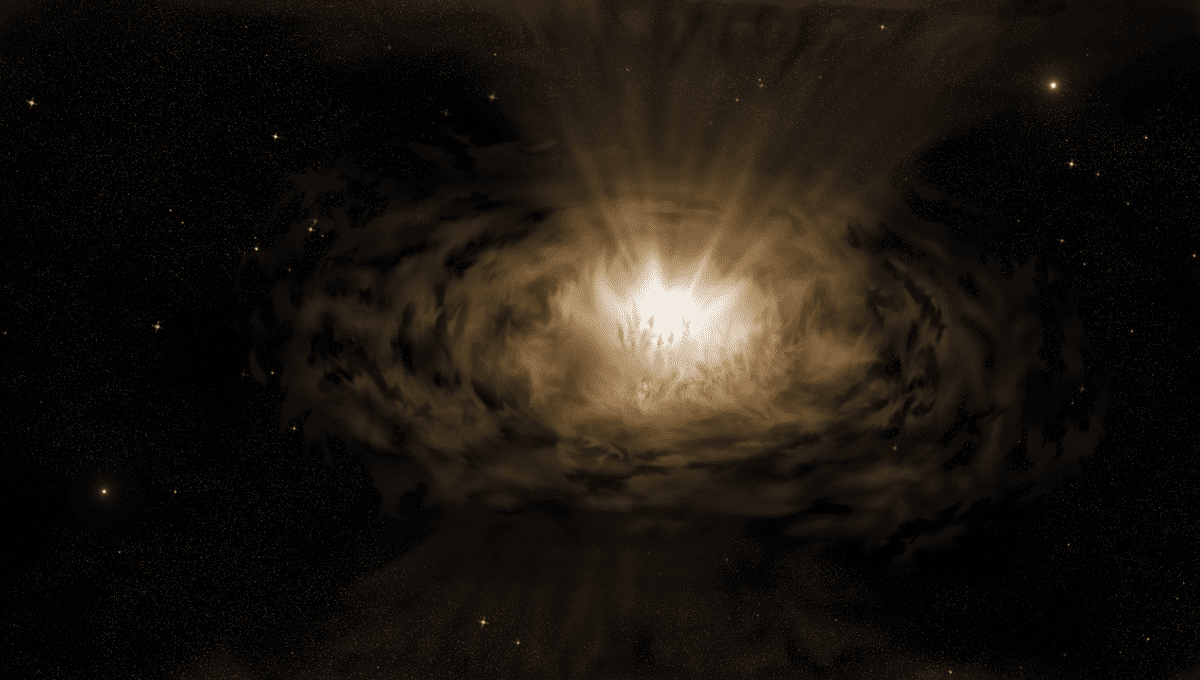
At the center of almost every galaxy lies a supermassive black hole. And if it is continuously feeding, it is known as an Active Galactic Nucleus, or AGN. AGNs are the most compact steady source of energy in the universe – and new research suggests that scientists have underestimated just how much energy is emitted by these extreme cosmic objects.
The problem is dust. Around AGNs and in the rest of their host galaxies, but also in our own, there is dust. Dust absorbs certain wavelengths of light, dimming the object that is producing said light. Just as more dust in the air makes for a redder sunset, the interstellar dust reddens the light from AGNs. This effect has always been considered negligible, but it turns out to have a big impact.
“When there are intervening small particles along our line of sight, this makes things behind them look dimmer. We see this at sunset on any clear day when the sun looks fainter,” lead author Dr Martin Gaskell, from the University of California, Santa Cruz, said in a statement.
The team looked at the emission from AGN NGC 5548 and were able to measure seven different indicators of the amount of dust around the AGN. These are all broadly in agreement, and suggest that the total reddening is 14 times higher than the modest reddening that is seen in stars in the neighborhood of the Sun. If we consider the dimming effect of looking out of our galaxy, the dimming is 10 times higher.
AGNs emit mostly in ultraviolet (UV) light, and this reddening effect has led to an underestimation of just how much less light astronomers are catching. The team estimates that the AGN might be 10 times brighter in UV than previously expected.
“The good agreement between the different indicators of the amount of reddening was a pleasant surprise,” said Gaskell. “It strongly supports simple theories of emission from active galactic nuclei. Exotic explanations of colours are not needed. This makes life simpler for researchers and is speeding up our understanding of what happens as black holes swallow material. We have shown that this is not the case and that the far ultraviolet light of a typical active galactic nucleus is dimmed by a large factor.”
The findings were published in the Monthly Notices of the Royal Astronomical Society.
Source Link: Active Supermassive Black Holes Are More Powerful Than We Had Imagined